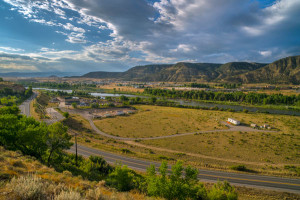Christopher Francis of Stanford University is interested in the floodplains in the upper Colorado River Basin, which are generally nutrient-poor but abundant in iron sulfide minerals, leading to the descriptor “naturally reduced zones” (NRZs). There are concerns that NRZs are slow-release sources of uranium to the aquifer that could persist for hundreds of years. (Photo by Roy Kaltschmidt, Berkeley Lab)
